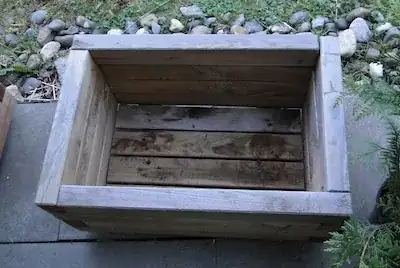I have bought a number of used wooden containers that I would like to grow Thuja trees and various vegetables in:

they are about 1 foot wide, 2 feet long, and 1 foot tall.
Being an amateur in these things, I naively assumed I'd just put the soil in there and the chinks between the planks would drain any excess water. However, I've since learned that you need some sort of isolation to keep the wood from rotting.
How do I create such an isolation while making sure that excess water can still find its way out of the container? I thought of just wrapping the inner area with plastic and putting holes in it for draining, but I guess that would damage the wood as well. Is there a "canonical" way of doing this?